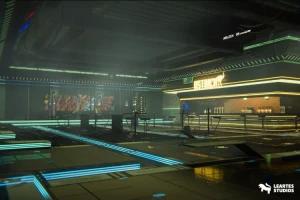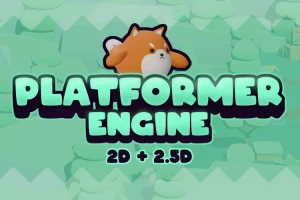
Poly Few | Mesh Simplifier and Auto LOD Generator
The performance of any 3d application is highly dependent on the total number of polygons that the GPU has to process per frame in a 3d scene. If you have a complex scene containing high polygon 3d models with a lot of meshes that use a lot of different materials, the overall performance of your game will suffer. Poly few is a complete optimization solution for unity that aims to solve this problem by allowing you to optimize high quality complex 3d scenes. With integrated features like mesh simplification, automatic LOD generation, mesh merging, and material combining, you can greatly improve the performance of your game with a few clicks without the need of writing even a single line of code. Such optimization techniques are especially useful when developing for resource constrained platforms like mobile phones or other low end devices. This can also help eliminate your expenses for artists.
Please note that from v7.63 onwards Auto UI Attaching has been completely removed. This means you have to manually add the PolyFew component in order to use it on a GameObject.
Supported features:
▓ Mesh simplification, Automatic LOD generation, Mesh combining, and Material combining in one package.
▓ Supports mesh simplification on the fly with a powerful runtime API.
▓ No coding knowledge is required. Use the full features of the tool in editor mode without writing even a single line of code.
▓ Supports simplifying both skinned and static meshes as well as meshes with 16 bit and 32 bit index formats.
▓ Supports simplifying complex nested object hierarchies as well as objects with sub- meshes and multiple materials.
▓ Supports combining both Static and Skinned meshes. Even supports combining rigged Skinned meshes and or Skinned meshes with blendshape/morph animations.
▓ Combine Materials using Texture Arrays. Only supports the Standard Shader (Specular and Non Specular setup)
▓ Texture Array based material combiner doesn't suffer from the common problems of texture atlases like texture bleeding, resolution limitation, and no tiled texture support.
▓ Allows mass generation of LODs for multiple selected objects at once.
▓ Preserves texture mappings.
▓ Preserves animations on meshes. Even supports blend shapes.
▓ Options to preserve UV Seams, UV Foldovers, and Border Edges.
▓ Allows preserving certain areas of the model up to specified levels, while simplifying the rest of the model normally.
▓ Supports animated meshes.
▓ Packs everything in a convenient inspector window that pops up right under the components hierarchy.
▓ Visualize the changes before actually applying them.
▓ Undo / Redo the applied changes per object.
▓ All the source code is included without encapsulation using dll files or any other means.
▓ Includes editor tooltips for every control to ease understanding and usage of the tool.
A README file is included in the package to help understand the usage and the various options of this tool. A demo scene is also included to assist in learning the usage of the runtime API.
Please note that all versions of unity from 2017.0 and above are supported by PolyFew. It's just that the asset store doesn't allow uploading assets supporting unity editor versions below Unity 2019.4 LTS. If you want to use the asset in older versions of unity you can download PolyFew in a newer version of unity (2019.4 LTS and above) and copy the entire PolyFew folder into an older version.
Requirements & Limitations:
► Unity Editor 2017 and Above is required.
► Scripting Runtime Version Required: .NET 4.6 Equivalent or Above. Go to PlayerSettings > Configuration > Scripting Runtime Version and change it to .NET 4.6 equivalent or Above
► In the Runtime API the methods for importing OBJ files from the local file system and for exporting GameObjects to obj don't work on WebGL builds as WebApps have no access to the local file system, however, the function for importing OBJ files from a server can be used on WebGL.
► Polygon reduction might not work best for every model, there is a limit that varies mesh to mesh for the number of polygons you can reduce to, without causing too much distortion in the mesh.
► Material combiner can only combine materials that use the Standard Shader or its variants (Standard Specular etc) and it uses texture arrays to combine materials not texture atlases.
This means you can't combine URP or HDRP materials.
► Once a material has been combined you can't adjust the alpha value for its albedo tint color.
► In Unity 2017.2 and below, mesh combiner won't combine meshes if the combined mesh exceeds the maximum vertex count of 65534. This is a limitation in older versions of Unity.
► Unity Trees (Tree editor) have a limitation that it cannot have wind zones affect it if it has LODs (LODGroup component) setup. This is not a bug in PolyFew but a limitation with Unity itself.
► You can't use "AnimatorUtility.OptimizeTransformHierarchy" or the model importer's rig tab's "Optimize Game Objects" function on a GameObject on which you need to use PolyFew. You might get "bones do not match bindpose" error. This is a bug with unity. When it performs these actions it doesn't update some of the attributes in the mesh class which results in data inconsistencies.









